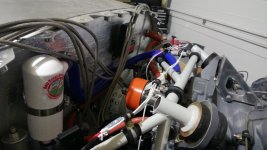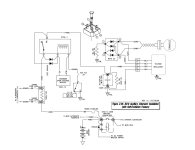YankeeBravo
Member
Good day,
Working on my electrical system I plan on a Z-13/8 architecture with a SD-8 standby alternator. I have read the the outer cage (orange part) is spinning.
Is it only when the alternator is switched ON or all the time ?
Will it be all the time if a self-excitation diode is added (Z-25) ?
Isn't it a problem ? (it feel strange to have something rotating "freely" under the cowl), other than the engine
Thanks in advance
Ps : Picture for illustration from a RV-10
Working on my electrical system I plan on a Z-13/8 architecture with a SD-8 standby alternator. I have read the the outer cage (orange part) is spinning.
Is it only when the alternator is switched ON or all the time ?
Will it be all the time if a self-excitation diode is added (Z-25) ?
Isn't it a problem ? (it feel strange to have something rotating "freely" under the cowl), other than the engine
Thanks in advance
Ps : Picture for illustration from a RV-10






